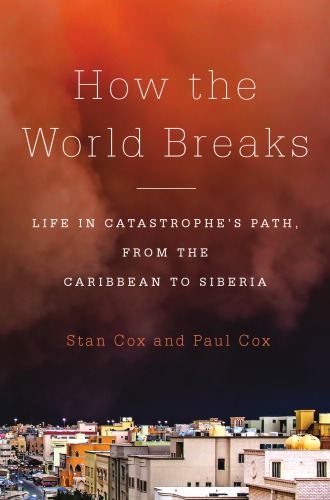
How the World Breaks
Life in Catastrophe's Path, from the Caribbean to Siberia
کتاب های مرتبط
- اطلاعات
- نقد و بررسی
- دیدگاه کاربران
نقد و بررسی

May 9, 2016
Scientist Stan and anthropologist Paul, father-and-son ecological investigators, travel the world on a grand tour of recent geoclimatic disasters in order to imagine how human habitats will change as the planet becomes warmer, wetter, and more crowded. They have few positive things to write about, covering such events as wildfires in Australia’s Blue Mountains, Hindu pilgrims caught in a Himalayan mudslide, super typhoons in the Philippines, and the Caribbean island of Monserrat getting buried in volcanic ash. U.S. locations, including Miami and the Tornado Alley of the Midwest, also feature prominently on the pair’s itinerary. En route, they tackle some difficult questions: Do natural disasters promote long-term economic growth? Can cities be made to float? How do a northward-creeping taiga and melting permafrost affect carbon balance? Does climate change disproportionately affect the world’s poor? Attempting to address these and other pressing ecological quandaries leads them to make some intriguing intellectual connections: they touch upon cultural anthropology, Enlightenment literature, Ponzi scheming, and real-life engineering that sounds like science fiction. While definitive answers remain difficult to come by, their message is clear: solving the ecological problems of climate change requires more than technological fixes.

May 15, 2016
A frightening, from-the-trenches overview of "natural" and man-made disasters--and responses to them--across the globe. This father-and-son team of scientists--Stan (Any Way You Slice It: The Past, Present, and Future of Rationing, 2013, etc.) is a research coordinator at the Land Institute in Salina, Kansas, and his son, Paul, is an anthropologist based in Copenhagen--delves closely into "geoclimatic hazards," such as earthquakes, cyclones, volcanic eruptions, and mudslides, from Missouri to Australia, gauging the human toll and cultural value of so-called victimization and resilience. These are personal stories of cataclysm--e.g., the almost resigned, mystical attitude of Filipinos to deadly cycles of typhoons and earthquakes, during which thousands of people perish, a toll unimaginable to Western nations; or conditions in the slums of flooding-prone Mumbai, where residents have no choice but to accept their role as "absorber" of shocks for the rest of the stricken city. The authors also offer stories of how disasters are used as opportunity, especially in economic rebuilding--i.e., pushing through much-needed legislation for reinvigorating the status quo, which occurred in Joplin, Missouri, after a deadly tornado wiped out its blighted business district in 2011 or in New York City and coastal New Jersey after Hurricane Sandy in 2012. Each chapter of this work of wide-traveled research takes up one aspect of these geoclimatic hazards once considered a kind of punishment for man's sins (such as the mother of all disasters, the Lisbon earthquake of 1755). More recently, the horrendous 2013 mountain landslides in Uttarakhand, India, were arguably the result of man-made road building and deforestation. In the end, the authors assert that communities at risk, such as Miami Beach, Florida, "have to abandon as a mirage the old promises of security and development" and embrace what is going to become the art of resilience. Though short on a clear thesis, the book is strong on examples of human adaptation in the face of catastrophe.
COPYRIGHT(2016) Kirkus Reviews, ALL RIGHTS RESERVED.

June 1, 2016
This father-son writing team comprises a Denmark-based anthropologist and a research coordinator for the Land Institute in Kansas, an organization dedicated to sustainable agriculture. Their goal in this ambitious and somewhat scholarly title is to provide in-depth surveys of several locations already suffering from the effects of climate change. From the relentless optimism of Miami Beach to Australia's fires, a mud-flow disaster in Indonesia, the aftermath of Hurricane Sandy in New York City (and the insistence on trying to maintain business as usual in the midst of the crisis), and the devastating volcanic eruption on the island of Monserrat, the Coxes discuss economics, climate science, and politics as they consider how areas that have no choice but to deal with global warming are doing so. Covering so many different locations and disasters in such dense detail can be head spinning, but this is an invaluable overview of global struggles. And a terrifying one, as both authors believe it should be.(Reprinted with permission of Booklist, copyright 2016, American Library Association.)

























دیدگاه کاربران